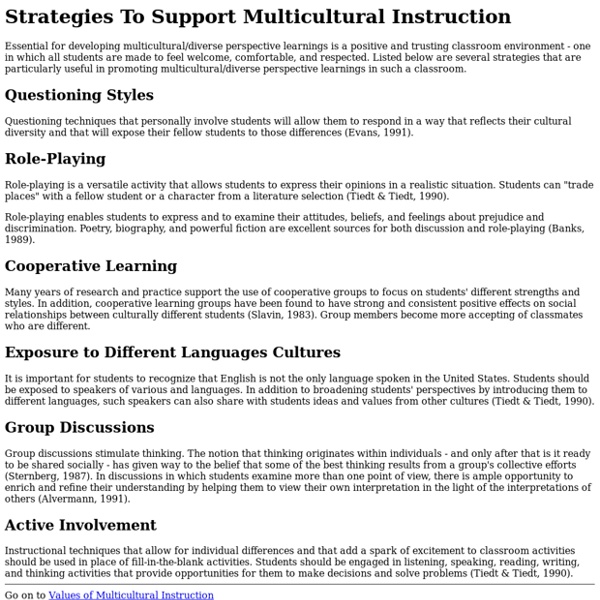Strategies To Support Multicultural Instruction

https://www.eduplace.com/rdg/res/literacy/multi2.html
Related: Inclusive Literature for Adolescents
HuffPost is now a part of Verizon Media
I have taught literature at the college level for almost a decade and at as many as six different campuses. These have mainly been classes that were focused on non-western writing. One semester, I had assigned Nigerian novelist Chimamanda Ngozi Adichie’s Purple Hibiscus and only a week earlier her TED talk, Danger of a Single Story had started to circulate on the web. I sent the link to my students and thought we could incorporate it into our discussion on colonialism, multiculturalism, issues of race and of course, the novel itself. Little did I know that this simple talk would elicit the intensely disproportionate response that landed in my inbox the next morning. A young male student had found the video very offensive.
Diverse and Inclusive Books to Inspire Young Adults
By the time readers are young adults, their worlds have broadened to include a wide range of people and life experiences that inform their developing identities. As teenage readers discover who they are, it's important that they have access to stories that reflect and celebrate the full range of human experiences and a diversity of race, ethnicity, sexual orientation, gender identity, physical and mental abilities, religion, and culture. The following topics and themes are explored in this list: For even more Scholastic books that explore these themes, check out our catalog, The Power of Story: Diverse Books for All Readers.
Tricia Ebarvia: How Inclusive Is Your Literacy Classroom Really?
In 1981, my family moved eighteen miles from northeast Philadelphia to the suburbs. Because I had just turned five, my parents decided we needed to move into a better school district. This meant moving from a predominantly black neighborhood to a predominantly white one.
Making Connections: Culturally Responsive Teaching and the Brain
In reality, cultural responsiveness is more of a process than a strategy. It begins when a teacher recognizes the cultural capital and tools students of color bring to the classroom. She is then able to respond to students' use of these cultural learning tools positively by noticing, naming, and affirming when students use them in the service of learning. The most common cultural tools for processing information utilize the brain's memory systems -- music, repetition, metaphor, recitation, physical manipulation of content, and ritual. The teacher is "responsive" when she is able to mirror these ways of learning in her instruction, using similar strategies to scaffold learning.
BYU McKay School of Education
Gallery Stroll Activity Cultural Diorama Activity Mad Gab Activity Download the whole packet Benefits of Multicultural Education Activities Activities allow students to experience new things and to express their feelings. Benefits include the following: Help educators reach students who may benefit from more hands-on or practical learning experiences Allow students to become actively involved in the learning process Encourage students to critically think about and analyze information themselves, rather than passively receiving knowledge
Related:



